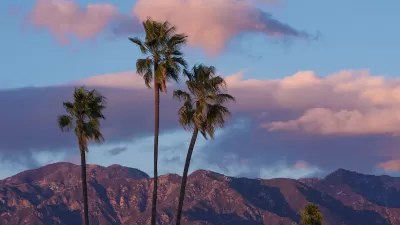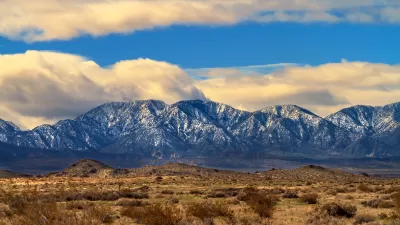President Biden just signed a proclamation to expand the San Gabriel Mountains National Monument by over 100,000 acres.
Last week, President Biden took action to expand the San Gabriel Mountains National Monument, which President Obama designated in 2014. The proclamation adds 105,919 acres of U.S. Forest Service lands to the south and west of the Monument’s 346,177 acres, protects additional cultural, scientific, and historic objects, and expands access to outdoor recreation on public lands.
The lands added to the San Gabriel Mountains National Monument contain unique cultural, geological, and ecological resources. A diversity of animals, birds, reptiles, and other wildlife, including numerous sensitive, threatened, and endangered species, live among the unique geological and ecological features of the area, including its unusual canyons, chaparral and coastal sage scrub lands, riparian woodlands, and conifer forests. These lands are also homes to some of California’s most imperiled and iconic birds, including the endangered California condor. The area includes key habitats that support wetland-dependent plant species, sensitive fish and amphibians, and migration corridors. In addition, the area is geologically significant, with the landscape of the San Gabriel Mountains shaped by massive geologic forces over hundreds of millions of years.
As reported by Alex Wigglesworth, this expansion has been widely praised by the Indigenous leaders, politicians, conservationists, and community organizers who had long fought for the enlargement of the protected natural area which serves as the backyard of the Los Angeles Basin. The San Gabriel Mountains National Monument is within an hour’s drive of 18 million people.
To learn more, please read the source article.
FULL STORY: San Gabriel Mountains National Monument expands by more than 100,000 acres

Study: Maui’s Plan to Convert Vacation Rentals to Long-Term Housing Could Cause Nearly $1 Billion Economic Loss
The plan would reduce visitor accommodation by 25,% resulting in 1,900 jobs lost.

North Texas Transit Leaders Tout Benefits of TOD for Growing Region
At a summit focused on transit-oriented development, policymakers discussed how North Texas’ expanded light rail system can serve as a tool for economic growth.

Why Should We Subsidize Public Transportation?
Many public transit agencies face financial stress due to rising costs, declining fare revenue, and declining subsidies. Transit advocates must provide a strong business case for increasing public transit funding.

How Community Science Connects People, Parks, and Biodiversity
Community science engages people of all backgrounds in documenting local biodiversity, strengthening connections to nature, and contributing to global efforts like the City Nature Challenge to build a more inclusive and resilient future.

Alabama: Trump Terminates Settlements for Black Communities Harmed By Raw Sewage
Trump deemed the landmark civil rights agreement “illegal DEI and environmental justice policy.”

Dear Tesla Driver: “It’s not You, It’s Him.”
Amidst a booming bumper sticker industry, one writer offers solace to those asking, “Does this car make me look fascist?”
Urban Design for Planners 1: Software Tools
This six-course series explores essential urban design concepts using open source software and equips planners with the tools they need to participate fully in the urban design process.
Planning for Universal Design
Learn the tools for implementing Universal Design in planning regulations.
City of Santa Clarita
Ascent Environmental
Institute for Housing and Urban Development Studies (IHS)
City of Grandview
Harvard GSD Executive Education
Toledo-Lucas County Plan Commissions
Salt Lake City
NYU Wagner Graduate School of Public Service





























